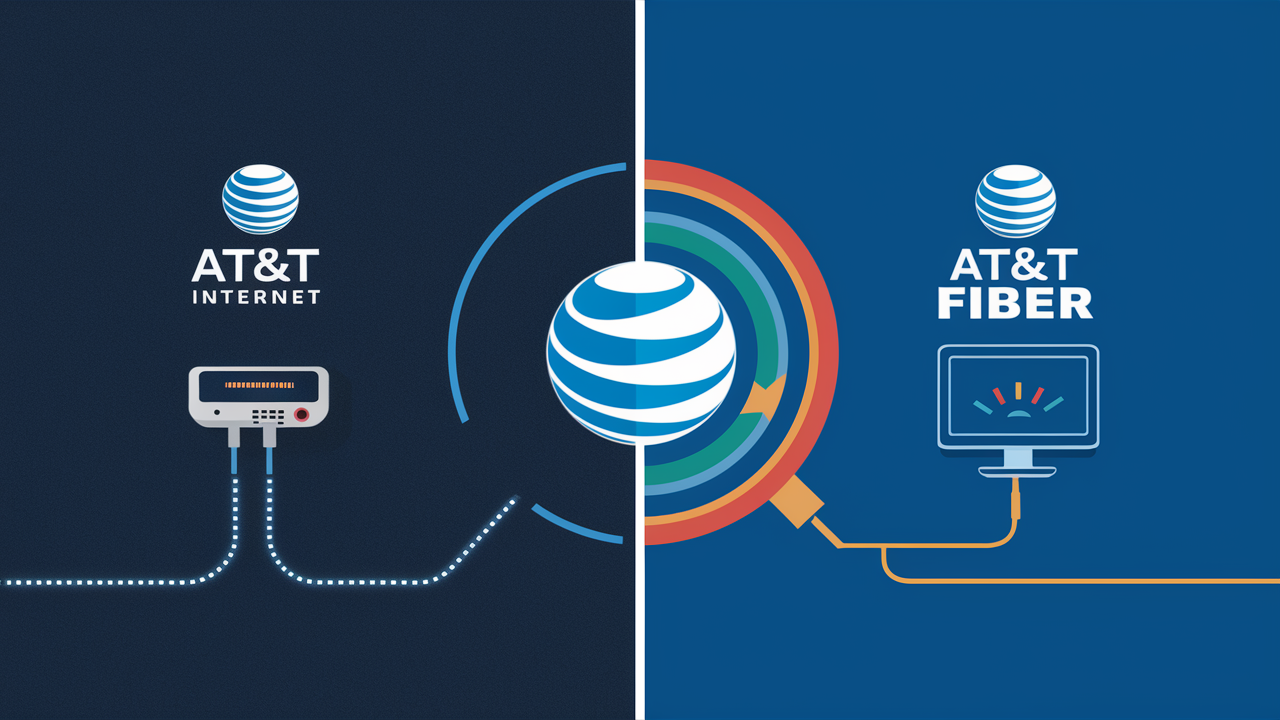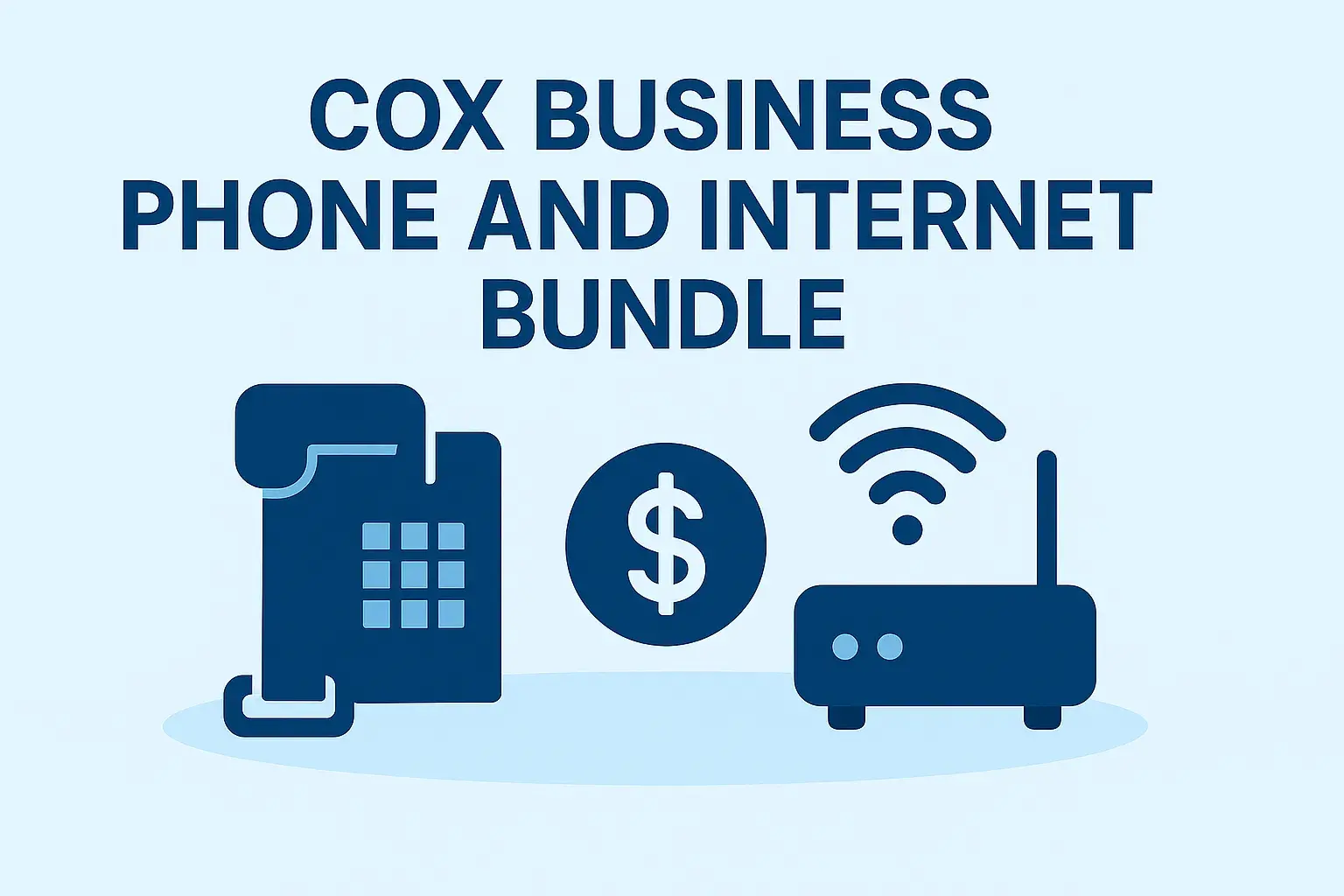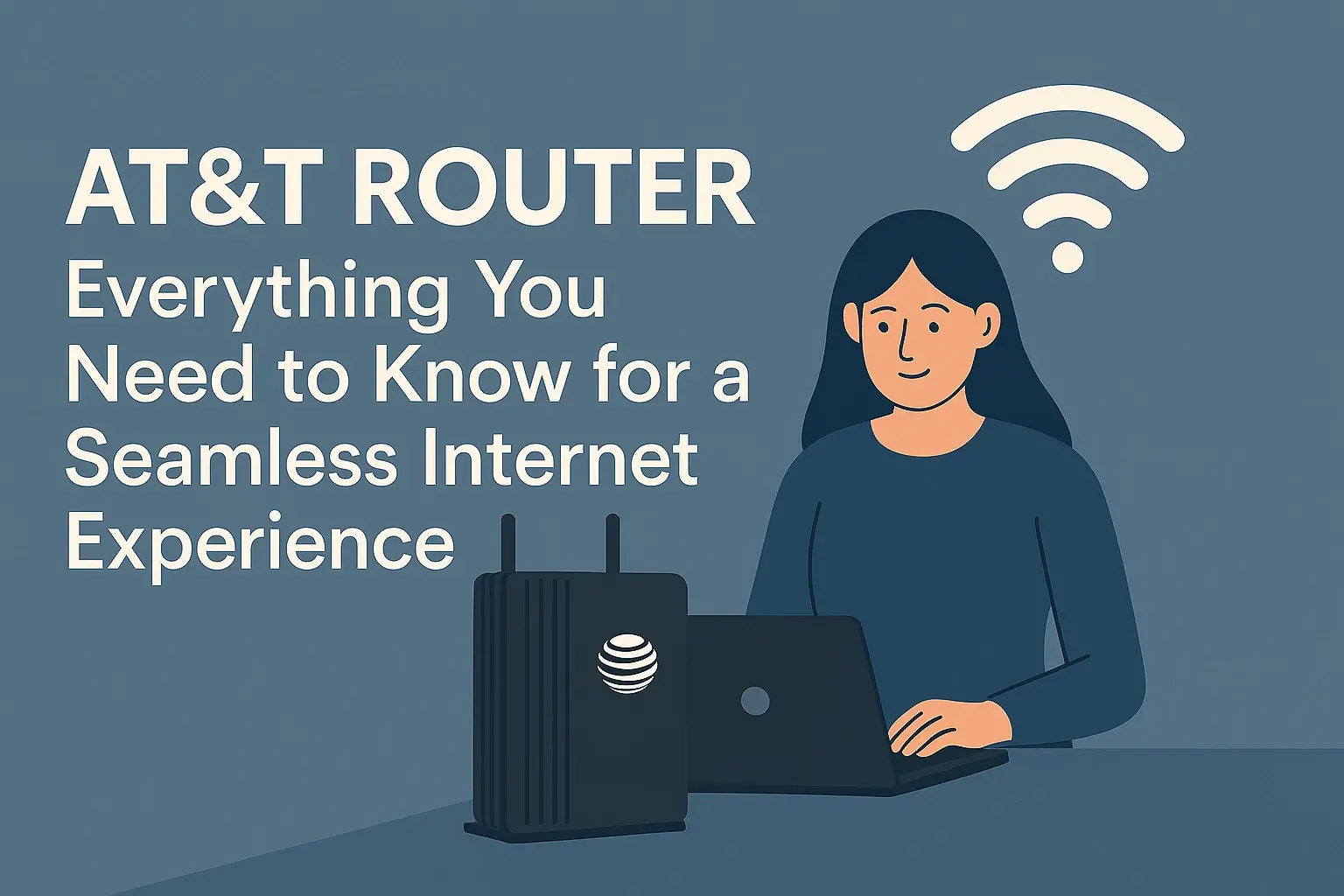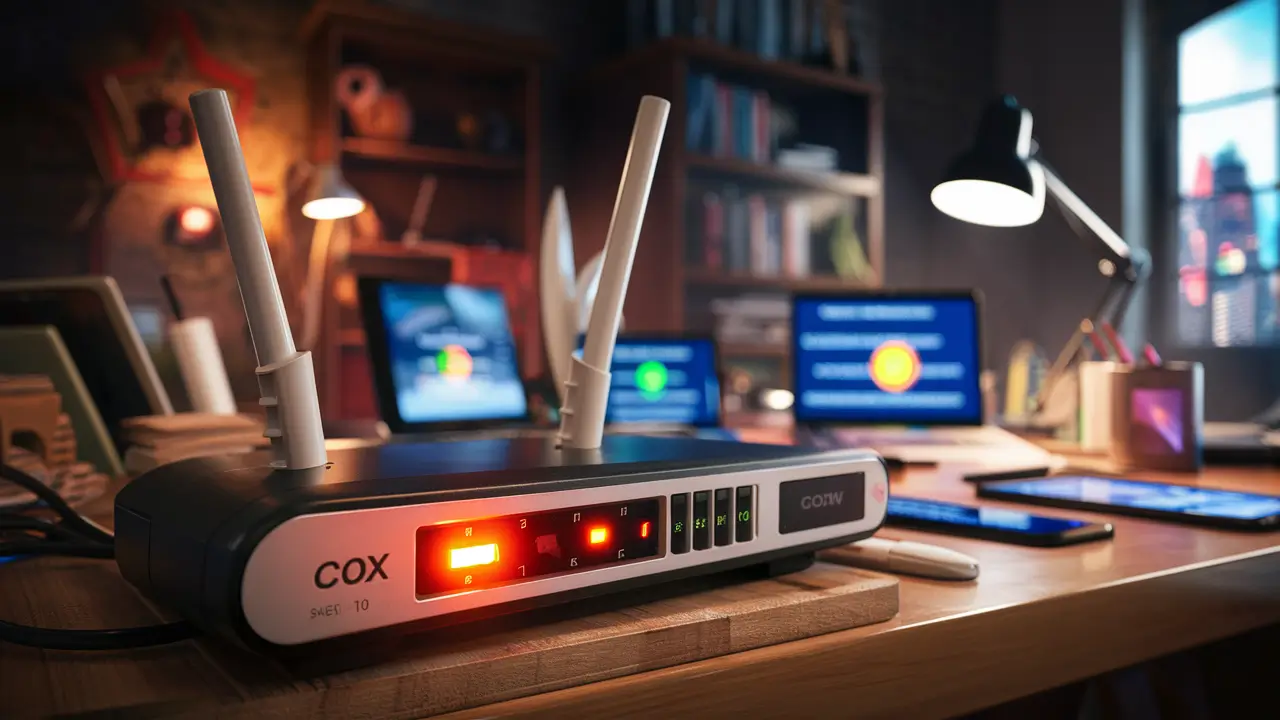
Understanding the distinction between AT&T internet and AT&T fiber is crucial for making an informed decision about your home connectivity. This guide breaks down the core differences, helping you choose the best service for your needs in 2025.
Introduction: Decoding AT&T's Connectivity Options
Navigating the world of internet service providers can be complex, especially when a single provider offers multiple types of connections. AT&T, a leading telecommunications company, offers both traditional internet services and cutting-edge fiber optic internet. Understanding the fundamental differences between AT&T internet and AT&T fiber is paramount to selecting a plan that aligns with your household's unique digital demands and budget. This comprehensive guide will demystify these options, providing the clarity needed to make an informed choice for your home in 2025.
AT&T Internet Explained: The Foundation of Connectivity
When we refer to "AT&T Internet" in a general sense, it often encompasses the company's suite of broadband services that are not exclusively fiber optic. These services have historically been the backbone of home internet access for many households and continue to serve a significant portion of AT&T's customer base. These technologies, while mature, are still evolving to offer better speeds and reliability where fiber is not yet available.
Types of AT&T Internet Services
AT&T offers several types of internet services that fall under the umbrella of traditional broadband. The specific technology available to you will depend heavily on your geographic location and the existing infrastructure in your area. These include:
- DSL (Digital Subscriber Line): This technology uses existing copper telephone lines to transmit data. It's widely available but generally offers the slowest speeds among broadband options. Speeds can vary significantly based on the distance from the local telephone exchange.
- Fixed Wireless: This service uses radio signals to connect your home to a nearby AT&T tower. It's often deployed in rural or underserved areas where traditional wired infrastructure is cost-prohibitive. Fixed wireless can offer better speeds than DSL in some cases but can be subject to environmental factors and signal interference.
- Cable Internet (via partnership or older infrastructure): While AT&T is primarily known for its fiber and DSL, in some regions, they may offer internet services that leverage existing cable infrastructure, though this is less common than their dedicated offerings.
It's important to note that AT&T is actively phasing out older DSL lines in favor of more advanced technologies where feasible. However, for many, DSL remains their primary or only option for wired broadband.
How AT&T Internet Works
The underlying principle of traditional AT&T Internet services, particularly DSL, relies on the existing copper telephone network. Your internet signal travels from your home, through a modem, over these copper lines to the nearest AT&T central office or digital subscriber line access multiplexer (DSLAM). From there, it connects to the broader internet backbone.
The further your home is from the central office, the weaker the signal can become, leading to slower and less stable internet speeds. This distance-dependent performance is a key characteristic of DSL technology.
Fixed wireless works differently. An antenna is installed at your home to receive a signal from a local AT&T tower. This signal is then routed to your router, providing internet access. This method bypasses the need for physical cables running directly to your home.
Pros and Cons of Traditional AT&T Internet
Understanding the advantages and disadvantages of traditional AT&T Internet services is crucial for setting realistic expectations.
Pros:
- Widespread Availability: Traditional internet services, especially DSL, are available in a vast number of locations, including many rural and suburban areas where fiber might not yet reach.
- Potentially Lower Cost: In areas with limited options, traditional internet plans can sometimes be more budget-friendly than fiber, especially for basic usage needs.
- Established Infrastructure: The copper network has been in place for decades, meaning the physical infrastructure is largely present, making deployment less complex than laying new fiber lines.
Cons:
- Slower Speeds: Compared to fiber, traditional internet speeds are significantly lower. Download speeds for DSL can range from a few Mbps to around 100 Mbps in ideal circumstances, while upload speeds are often much slower.
- Latency Issues: DSL can experience higher latency (the delay in data transfer), which can impact real-time applications like online gaming and video conferencing.
- Distance Sensitivity: Performance degrades noticeably with increased distance from the service provider's equipment.
- Susceptibility to Interference: Copper lines can be more susceptible to electromagnetic interference, potentially affecting connection stability.
- Limited Bandwidth for Multiple Users: As more devices connect and demand more bandwidth, traditional internet can struggle to provide a seamless experience for everyone simultaneously.
AT&T Fiber Explained: The Future of Speed
AT&T Fiber represents the company's commitment to providing next-generation internet connectivity. Unlike traditional services that rely on copper or wireless signals, AT&T Fiber utilizes fiber optic cables, which are made of glass or plastic strands, to transmit data as light pulses. This fundamental difference in technology unlocks unprecedented levels of speed, reliability, and performance.
How AT&T Fiber Works
Fiber optic cables are essentially conduits for light. Data is converted into light signals, which then travel through these ultra-thin glass strands at incredible speeds. These light signals are immune to electromagnetic interference, a significant advantage over copper lines.
The fiber optic network extends directly to the customer's home, a concept known as "Fiber-to-the-Home" (FTTH). This direct connection ensures that the user experiences the full potential of the fiber optic network without the limitations imposed by older infrastructure. The light signals are converted back into digital data by a device called an Optical Network Terminal (ONT) installed at your premises.
This end-to-end fiber connection is what enables the symmetrical (equal download and upload speeds) and remarkably high bandwidth that fiber is known for. In 2025, AT&T is aggressively expanding its fiber footprint, making it the preferred choice for many new installations and upgrades.
Key Benefits of AT&T Fiber
The advantages of AT&T Fiber are substantial and directly address the limitations of traditional internet services:
- Blazing-Fast Speeds: AT&T Fiber offers speeds that are orders of magnitude faster than traditional internet. Plans commonly include 300 Mbps, 500 Mbps, and even 1 Gbps (1000 Mbps) symmetrical speeds. This means both downloading and uploading large files, streaming high-definition content, and engaging in bandwidth-intensive activities are seamless.
- Symmetrical Speeds: A major differentiator is the symmetrical nature of fiber speeds. With AT&T Fiber, your upload speeds are just as fast as your download speeds. This is critical for activities like video conferencing, uploading large files to cloud storage, live streaming, and online gaming.
- Unmatched Reliability: Fiber optic cables are less prone to degradation and interference from weather, electrical signals, or physical damage compared to copper. This results in a more stable and consistent connection.
- Low Latency: The speed at which light travels through fiber results in extremely low latency. This translates to near-instantaneous response times, which is vital for competitive online gaming, real-time trading, and lag-free video calls.
- Future-Proofing: As internet usage continues to grow and demand for higher bandwidth increases with emerging technologies like virtual reality and advanced smart home systems, fiber provides a robust and scalable solution that can easily accommodate future needs.
- Enhanced Home Network Performance: With high symmetrical speeds, multiple users and devices in a household can simultaneously stream 4K video, play online games, conduct video calls, and browse the web without experiencing slowdowns or buffering.
Potential Drawbacks of AT&T Fiber
Despite its numerous advantages, AT&T Fiber also has some considerations:
- Limited Availability: The primary drawback is that AT&T Fiber is not yet available in all areas. Its deployment is ongoing, and it's most prevalent in urban and suburban areas where AT&T has invested heavily in infrastructure upgrades.
- Potentially Higher Cost: While AT&T often offers competitive pricing, especially for higher speeds, fiber plans can sometimes be more expensive than basic DSL plans, though the value proposition often justifies the cost for many users.
- Installation Complexity: While generally straightforward, fiber installation may involve running new cables to your home, which can sometimes be more involved than activating DSL service.
Direct Comparison: AT&T Internet vs. AT&T Fiber
To truly grasp the difference, let's directly compare AT&T Internet (primarily DSL and Fixed Wireless) against AT&T Fiber across key metrics. This comparison will highlight why one might be a better fit for your household than the other in 2025.
| Feature | AT&T Internet (DSL/Fixed Wireless) | AT&T Fiber |
|---|---|---|
| Technology Used | Copper telephone lines (DSL), Radio signals (Fixed Wireless) | Fiber optic cables |
| Typical Download Speeds | 5 Mbps - 100 Mbps (DSL); Up to 100 Mbps (Fixed Wireless) | 300 Mbps, 500 Mbps, 1 Gbps (1000 Mbps) |
| Typical Upload Speeds | 1 Mbps - 10 Mbps (DSL); Up to 20 Mbps (Fixed Wireless) | 300 Mbps, 500 Mbps, 1 Gbps (1000 Mbps) |
| Speed Symmetry | Asymmetrical (download much faster than upload) | Symmetrical (download and upload speeds are equal) |
| Reliability | Moderate; susceptible to distance, interference, and weather (Fixed Wireless) | High; very resistant to interference and environmental factors |
| Latency | Moderate to High; can impact real-time applications | Very Low; ideal for gaming and real-time applications |
| Availability | Very High; widespread, especially in rural and established areas | Growing, but primarily in select urban and suburban areas |
| Best For | Basic browsing, email, light streaming, limited simultaneous users | Heavy streaming (4K/8K), online gaming, remote work, smart homes, multiple users/devices |
| Cost (Typical) | Lower to Moderate | Moderate to Higher (but often better value for speed/performance) |
Speed and Performance
The most significant divergence lies in speed and performance. AT&T Fiber offers gigabit speeds and beyond, meaning you can download an HD movie in seconds and upload large video files with ease. This is a stark contrast to DSL, where downloading the same movie could take minutes, and uploading could take considerably longer, especially with limited upload bandwidth.
For households with multiple users and devices, the difference is even more pronounced. While AT&T Internet might struggle to support simultaneous 4K streaming and online gaming, AT&T Fiber handles these demands effortlessly. In 2025, with the proliferation of 4K/8K content and increasingly sophisticated online games, the need for high, symmetrical bandwidth is more critical than ever.
Reliability and Latency
Fiber optic cables are inherently more reliable. They are not affected by electromagnetic interference, which can plague copper lines and cause intermittent connection drops or slowdowns. Environmental factors like heat, cold, and moisture also have less impact on fiber. This translates to a more stable and consistent internet experience.
Latency, the time it takes for data to travel from your device to a server and back, is crucial for real-time applications. AT&T Fiber boasts extremely low latency, often in the single-digit milliseconds. This is a game-changer for competitive gamers who need split-second reaction times and for professionals who rely on seamless video conferencing. Traditional internet, especially DSL, often has higher latency, leading to noticeable delays and a less responsive online experience.
Availability and Coverage
This is where the distinction often dictates the choice. AT&T Internet, particularly DSL, has the most extensive coverage. If you live in a rural area or a region not yet upgraded with fiber infrastructure, DSL or Fixed Wireless might be your only wired broadband options from AT&T. AT&T is continuously expanding its fiber network, but it's a massive undertaking, and full coverage across all areas is still some years away.
To check availability for both services, you can visit the AT&T website and enter your address. This will show you which services are offered in your specific location.
Pricing and Plans
Pricing varies significantly based on the service type, speed tier, and your location. Generally, AT&T Fiber plans, especially the higher speed tiers like 1 Gbps, will have a higher monthly cost than basic DSL plans. However, it's essential to consider the value proposition. For a comparable price, fiber offers vastly superior performance, reliability, and future-proofing.
AT&T often runs promotions for new fiber customers, which can include discounted introductory rates or bundled services. It's always advisable to compare the total cost of ownership, factoring in the performance benefits, when evaluating pricing. For instance, a slightly higher monthly fee for fiber might eliminate the need for costly data overages or the frustration of slow connections that impact productivity.
In 2025, AT&T is focusing on simplifying its fiber plans, often offering a single, high-speed tier with attractive pricing to encourage adoption. Traditional internet plans may offer more granular speed tiers, catering to a wider range of budgets and usage needs.
Installation and Equipment
For AT&T Internet (DSL), installation typically involves activating service on existing phone lines. A technician may visit to ensure proper setup, but often it can be self-installed. The equipment usually includes a modem/router combo. For Fixed Wireless, an outdoor antenna installation is required.
AT&T Fiber installation involves running a fiber optic cable from the street to your home and installing an Optical Network Terminal (ONT). This is usually done by a professional technician. AT&T provides a Wi-Fi gateway (router/modem combo) designed to handle the high speeds of fiber. While self-installation is sometimes an option for fiber, professional installation is generally recommended to ensure optimal performance and correct setup.
Choosing the Right Service for Your Needs
The decision between AT&T Internet and AT&T Fiber boils down to your specific usage habits, budget, and what's available in your area. There's no one-size-fits-all answer, but by considering the following, you can make an informed choice.
Who Should Choose Traditional AT&T Internet?
Traditional AT&T Internet services are best suited for:
- Budget-Conscious Users: If your primary concern is minimizing monthly internet expenses and your usage is light, a basic DSL plan might suffice.
- Infrequent Internet Users: For households that only use the internet for occasional email checks, light web browsing, or very occasional streaming, the lower speeds might be acceptable.
- Areas Without Fiber Availability: If AT&T Fiber is not an option at your address, traditional AT&T Internet (DSL or Fixed Wireless) will be your available choice for wired broadband.
- Users with Minimal Bandwidth Needs: If you live alone or with one other person, and you don't engage in bandwidth-heavy activities, the limitations might not be as noticeable.
Who Should Choose AT&T Fiber?
AT&T Fiber is the superior choice for:
- Heavy Streamers: If you frequently stream 4K or 8K content on multiple devices, fiber ensures a buffer-free experience.
- Online Gamers: The low latency and high symmetrical speeds of fiber provide a significant competitive advantage and a smoother gaming experience.
- Remote Workers: For those who rely on stable, high-speed internet for video conferencing, uploading large files, and accessing cloud-based applications, fiber is essential.
- Large Households with Multiple Devices: If your home has many connected devices (smart TVs, smartphones, tablets, smart home devices) that are used simultaneously, fiber can handle the concurrent demand without performance degradation.
- Content Creators: Uploading large video files, photos, or other digital assets is dramatically faster with fiber's symmetrical upload speeds.
- Future-Proofing: If you want an internet connection that will reliably support emerging technologies and increasing bandwidth demands for years to come, fiber is the way to go.
Key Factors to Consider When Deciding
- Availability: This is the absolute first hurdle. Check what AT&T offers at your specific address.
- Your Household's Internet Usage: Be honest about how many people use the internet, what they use it for, and how many devices are typically connected.
- Budget: While fiber can be more expensive upfront, consider the long-term value and potential to avoid frustration.
- Need for Upload Speed: If you upload files regularly, video call often, or stream live, symmetrical speeds are critical.
- Latency Sensitivity: For gamers or those in time-sensitive professions, low latency is non-negotiable.
- Future Needs: Consider how your internet needs might evolve over the next 3-5 years.
Real-World Scenarios and Examples
Let's illustrate the differences with practical scenarios common in 2025.
Scenario 1: The Casual Browser
User Profile: Sarah lives alone and primarily uses the internet for checking email, browsing news websites, occasional social media, and streaming a movie or two per week in standard definition (SD). She rarely has more than two devices connected at once.
Recommendation: For Sarah, traditional AT&T Internet (e.g., a basic DSL plan) would likely be sufficient. The speeds, while not cutting-edge, would adequately support her limited usage. The lower cost would be a significant advantage. If AT&T Fiber is available, it would be overkill and likely more expensive than necessary, though it would offer a superior experience if budget is not a primary constraint.
Scenario 2: The Streamer and Gamer
User Profile: The Miller family consists of two adults and two teenagers. They regularly stream 4K content on multiple TVs, play online multiplayer games, and often have multiple smartphones, tablets, and smart home devices connected simultaneously. Uploading large game updates or family videos is also common.
Recommendation: AT&T Fiber is the clear winner here. The 300 Mbps or 500 Mbps symmetrical plans would easily handle the simultaneous demands of streaming, gaming, and multiple connected devices without buffering or lag. The low latency of fiber would be particularly beneficial for the gamers in the family. Traditional internet would likely lead to constant frustration with buffering, lag, and slow download/upload times.
Scenario 3: The Remote Worker and Creator
User Profile: David works from home full-time as a graphic designer. He relies heavily on video conferencing for client meetings, uses cloud-based design software, and frequently uploads large design files and portfolio pieces to online platforms. He also enjoys streaming high-definition content in the evenings.
Recommendation: AT&T Fiber is essential for David. The symmetrical upload speeds are critical for his work, allowing him to send large files quickly and participate in high-quality video calls without interruption. The overall speed and reliability ensure his productivity isn't hampered by internet issues. While a high-tier DSL might offer decent download speeds, its limited upload speed would be a significant bottleneck for his professional needs. For David, AT&T Fiber is an investment in his career.
Understanding AT&T Internet Technologies
A deeper dive into the underlying technologies helps solidify the differences.
DSL Explained
DSL (Digital Subscriber Line) leverages the existing copper telephone network. It works by using frequencies on the phone line that are not used for voice calls. This allows for simultaneous phone and internet use. However, the signal degrades over distance from the telephone company's central office or DSLAM. Speeds are also significantly asymmetrical, with download speeds being much higher than upload speeds. In 2025, AT&T continues to offer DSL where fiber is not yet deployed, but it's generally considered a legacy technology.
Fixed Wireless Explained
Fixed Wireless is a wireless broadband technology that connects a fixed location (your home) to a wireless access point, typically a tower. It uses radio waves to transmit data. This technology is often deployed in rural or semi-rural areas where laying physical cables is not economically feasible. While it can offer better speeds than DSL in some cases, it can be susceptible to interference from weather, obstructions (like trees), and other radio signals, potentially leading to less consistent performance than wired connections.
Fiber Optic Technology
Fiber optic cables are made of thin strands of glass or plastic that transmit data as pulses of light. This technology offers several advantages:
- Speed: Light travels incredibly fast, enabling extremely high data transmission rates.
- Bandwidth: Fiber can carry significantly more data than copper cables.
- Reliability: It's immune to electromagnetic interference and less affected by environmental factors.
- Symmetry: Fiber networks are designed to provide equal download and upload speeds, which is crucial for modern internet usage.
Future Trends in AT&T Connectivity
The telecommunications landscape is constantly evolving. In 2025, AT&T is focused on expanding its fiber footprint significantly. This includes not only urban and suburban areas but also more targeted rural deployments where feasible. The goal is to provide gigabit speeds to millions more homes.
Beyond speed, AT&T is also exploring advancements in network management and customer experience. This includes more intelligent Wi-Fi solutions for homes, enhanced network security, and potentially offering even higher speed tiers as demand grows. The trend is undeniably towards faster, more reliable, and more symmetrical internet services, with fiber as the leading technology.
For traditional internet, AT&T may continue to optimize its existing infrastructure to squeeze out incremental improvements in speed and reliability where fiber is not an immediate option. However, the long-term vision is clearly centered on fiber optics as the primary delivery method for high-speed broadband.
Conclusion: Making Your Informed Decision
The core difference between AT&T Internet and AT&T Fiber lies in their underlying technology, which directly impacts speed, reliability, and overall performance. AT&T Internet, primarily comprising DSL and Fixed Wireless, offers widespread availability and can be a cost-effective solution for basic internet needs. However, it comes with limitations in speed, upload capacity, and latency, making it less ideal for demanding modern applications.
Conversely, AT&T Fiber utilizes light pulses transmitted through glass strands, delivering unparalleled symmetrical speeds, ultra-low latency, and exceptional reliability. While its availability is still growing, it is the definitive choice for households that engage in heavy streaming, online gaming, remote work, or require robust connectivity for multiple devices. In 2025, if AT&T Fiber is available at your address, it represents a significant upgrade that future-proofs your home's internet capabilities and offers a vastly superior user experience. Carefully assess your household's digital demands and available options to make the choice that best suits your needs.






